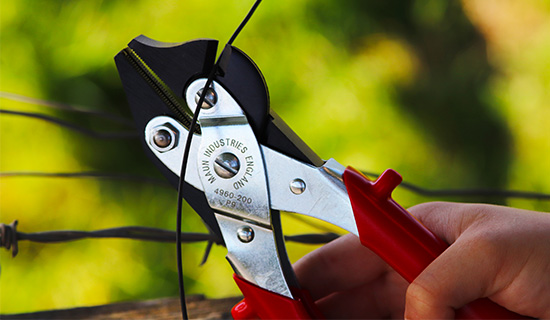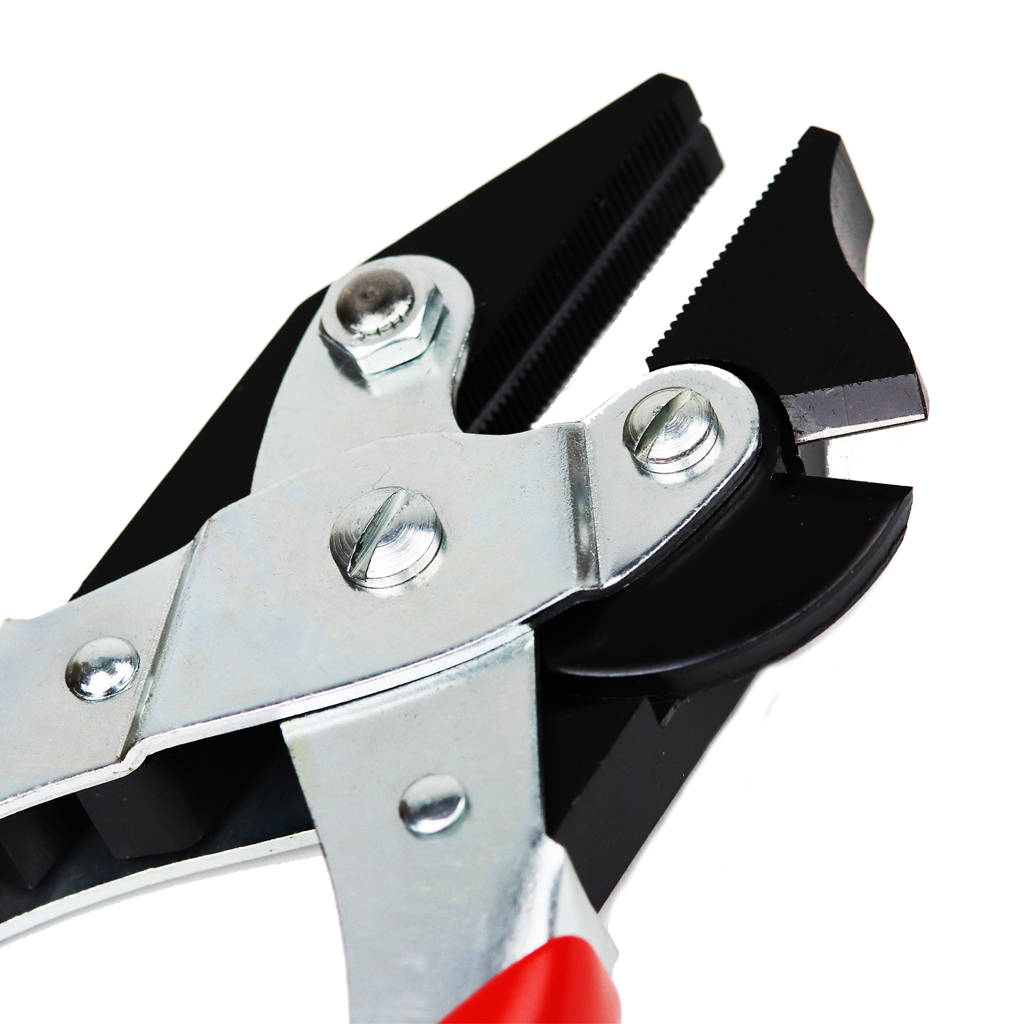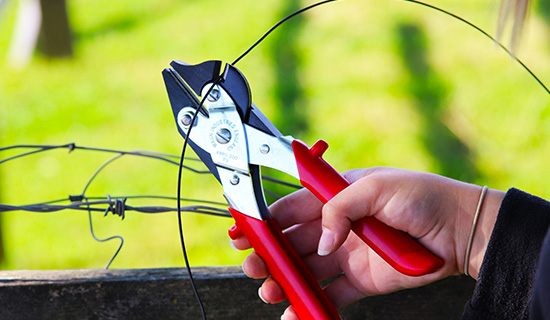What Are Fencing Pliers And How Do You Use Them?
28th Jun 2023
If you own livestock or make regular repairs to wire fencing, you'll know how tricky it can be to find a tool that fits the job.
That's where fencing pliers come in, designed and built so you have one tool that can do it all.
What are fencing pliers?

Fencing pliers are a set of pliers designed to help you build and repair wire fencing. This is particularly useful for farmers, and anyone who has to build a large amount of fencing.
They have uniquely designed features to help with building wire fences, such as side cutters to cut through hard wire, as well as gripping jaws to help bend and manipulate wire.
They are useful for creating wire loops, as well as tensioning wire, repairing broken fencing and cutting off excess wire.
Watch our Fencing Pliers in action:
How to choose fencing pliers?
When shopping for a set of fencing pliers, look out for the following features:
- Combined Grips & Cutting – Look for a set of pliers that can both grip and cut wire, as this will save you time having to swap tools during your fencing work.
- High Tensile Cutting Capabilities – Electric fencing wire isn't like normal wire. It's high tensile, making it much more difficult to cut, and will blunt a cheaper set of pliers. So go with a cutter that can handle high tensile wire cutting.
- V-Slot in Jaw – Look for a set of pliers that has a v-slot in each jaw, as this is explicitly designed for gripping wire.
- Parallel Jaws – There's nothing worse than wire slipping out of your pliers, so make sure to choose a set of parallel action pliers, as the even distribution of force ensures they don't slip.
- Hardened Cutters – No one likes a blunt cutting surface, so for longevity, make sure to choose a tool that's been hardened to HRC 62 or above, ensuring the tool will last a long time.
- Serrated Jaws – Choosing pliers with serrated jaws will give you even more grip, ensuring the pliers don't slip while gripping or bending the wire fencing.
- Compound Lever Action – All pliers multiply hand force, but to really save your hand strength, go for a compound lever action plier, that can provide double the force of a plier of similar length.
Best fencing pliers
The best fencing pliers by far are these 200 mm pliers from Maun, which have all of the features mentioned above, while also allowing you to thread the wire through the centre of the plier for added utility. They also have them with comfort grips here.

How to use fencing pliers
Fencing pliers have a lot of different functions, so we'll break down each one below:
Cutting wire fencing
To cut wire with your fencing plier, place the wire between
the side cutting jaws when open, squeeze the handle until the wire is cut and then
release the plier.

Twisting wire and tensioning fencing
To create wire loops or finish off connections in wire fencing with extra tension:
- Pass your straight piece of wire through the loop in the separate piece of fencing.
- Place the straight piece of wire between the main jaws of the plier and grip firmly. Tuck the excess piece of straight wire down and out of the way.
- Twist the pliers away from the straight piece of wire, until you have the tension required. This ends up winding the wire around the pliers, applying tension.
- Unwind the pliers back in the opposite direction, then hold the wire loop to stop it from unwinding. Now you can remove the pliers.
- Finally loop the excess wire back on itself to finish the connection.
Can you use normal pliers instead of fencing pliers?
You can use a normal set of pliers for some fencing jobs, but you will always need to bring two sets with you, one for the cutting, and one for the manipulating of wire.
Fencing pliers simply streamline the process, allowing you to use one tool instead of two.
Can fencing pliers cut barbed wire?
Yes, most high quality fencing pliers will be able to cut through barbed wire consistently.
How to install wire t-post clips
To install wire t-post clips:
- Take the hook end and hook it around the wire fencing.
- Bring the rest of the clip around the back of the post.
- Pull the open end over the top of the wire fence.
- Use a screwdriver or tool to twist the clip underneath the wire fence.
- Use fencing pliers to close the loops and make the ends safe.
Maun stock other tools perfect for agricultural environments here.
Learn more about different types of pliers here.
History of Fencing Pliers
Fencing pliers have a rich history throughout the ages, and date back to the early times of farm and livestock management. In the past they will have been handcrafted by blacksmiths, whereas now they're machine tooled. The older tools will have gone blunt very quickly, whereas modern technology allows us to create hardened blades to retain sharpness for much longer.
Maintaining Your Pliers
If you properly maintain your fencing pliers then they should last you for many years. Make sure to always clean them after every use to remove any dirt, and regularly check them for damage (pay particularly close attention to the pivot point and cutting edges). You can give the pliers a regular lubrication with oil to keep them working smoothly too.
Conclusion
We hope you now understand a bit more about fencing pliers and how they can be used.
If you have any questions, feel free to contact us at Maun, and we'd be happy to help.
Want to read more? Browse our related pages below:
- What are pliers?
- Best tools for livestock fencing
- What are Side Cutter Parallel Pliers?
- What are Diagonal Cutting Pliers?
- What are Round Nose Pliers and How to Use Them
- What are End Cutting Pliers?
- How to use pliers?
- How to use metal ball chain pliers?
- What are parallel pliers
- How To Cut Wire with Pliers

